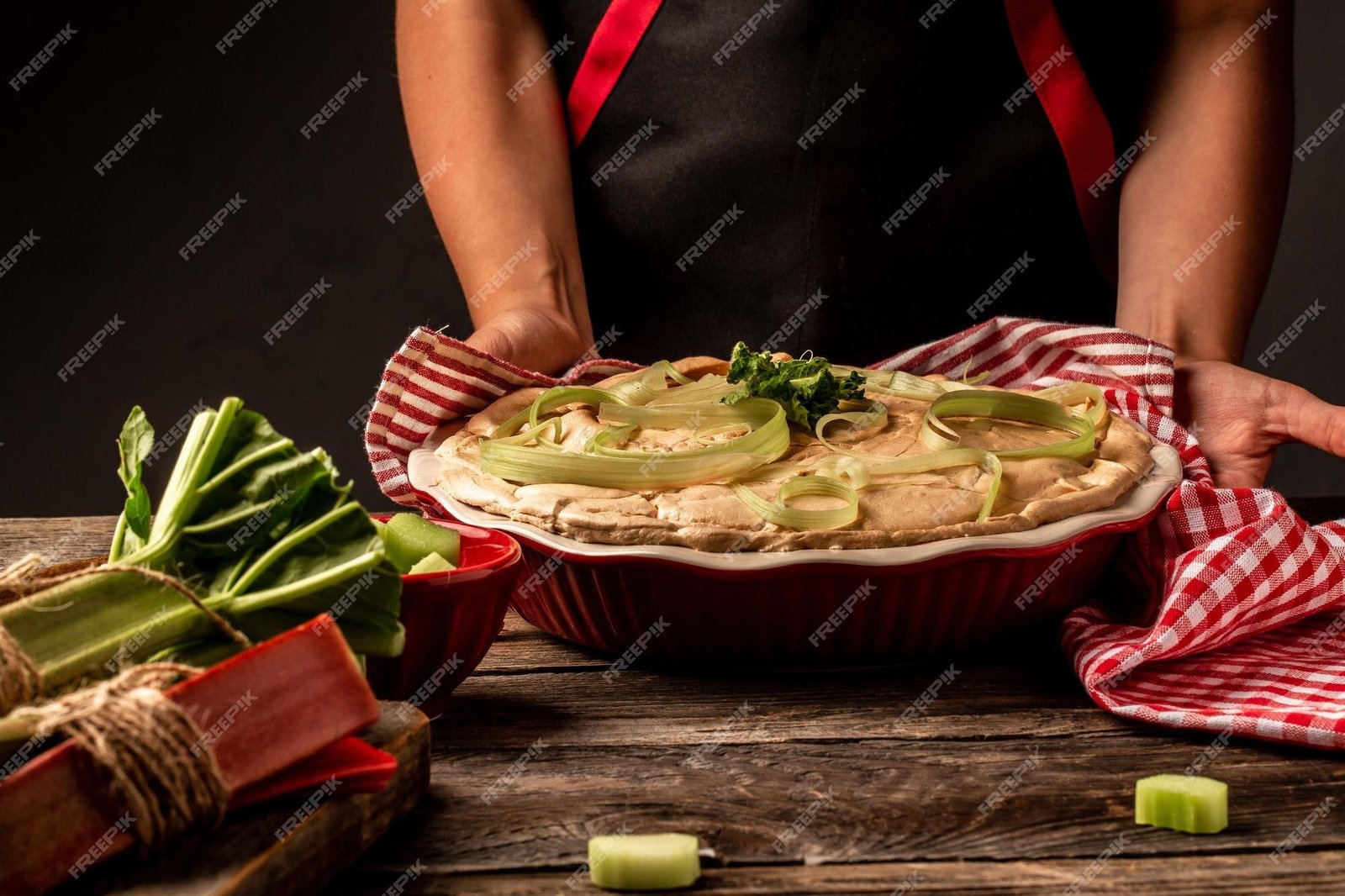Take Me to The Recipes
Sweden, with its stunning landscapes and vibrant culture, offers a culinary journey that reflects its rich history and diverse geography and the delicious Swedish Food.
Embark on a delectable journey into the heart of Sweden with our exploration of iconic Swedish food. From savory meatballs to elegant princess cake, discover the rich tapestry of flavors woven into the nation’s culinary traditions.
Lets dive into this comprehensive guide and savor the essence of Swedish cuisine. Your taste buds are in for a treat! From hearty main courses to delectable desserts, Swedish food is a celebration of flavors and traditions. We uncover the essence of Swedish cuisine, uncovering its origins, influences, and the delightful recipes that define its gastronomic identity.
Swedish food – Key takeaways
- Swedish cuisine shaped by history and geography
- Emphasis on fresh, locally sourced ingredients
- Communal dining traditions like smorgasbord
- Healthy and balanced with a focus on seafood and grains
- Absence of a singular national dish
- Unique ingredients like lingonberries and gravlax
- Vibrant culinary scene with global influences
Where is Sweden?


Index to Content
- Take Me to The Recipes
- More Articles
- Swedish’s History and Its Effect on the Cuisine
- How the Swedish Climate and Geography Influence Swedish Food
- Understanding the Essence of Swedish Cuisine
- Lingonberries can be Paired with Anything
- Flatbread – what’s your preferred topping?
- Swedish Culinary Traditions
- What Are the Health Implications of Swedish Food?
- Sweden’s National Dish
- Exploring Swedish Ingredients: The Flavors of Swedish Cuisine
- Swedish Recipes – Great Examples to Try at Home
Savor iconic Swedish Food recipes – Click on each tantalizing picture to open up the menu
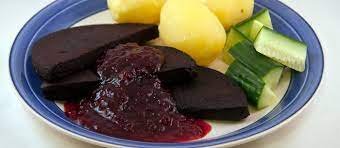
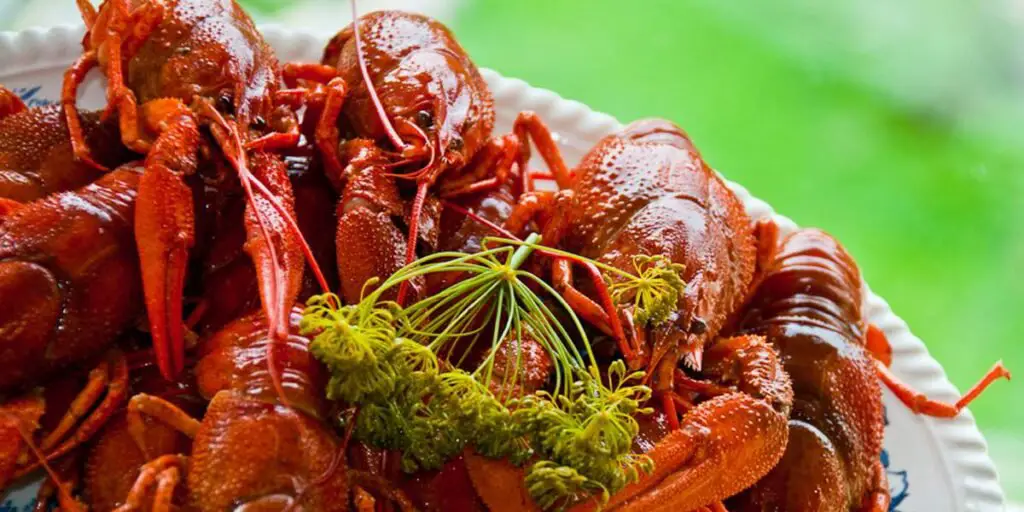
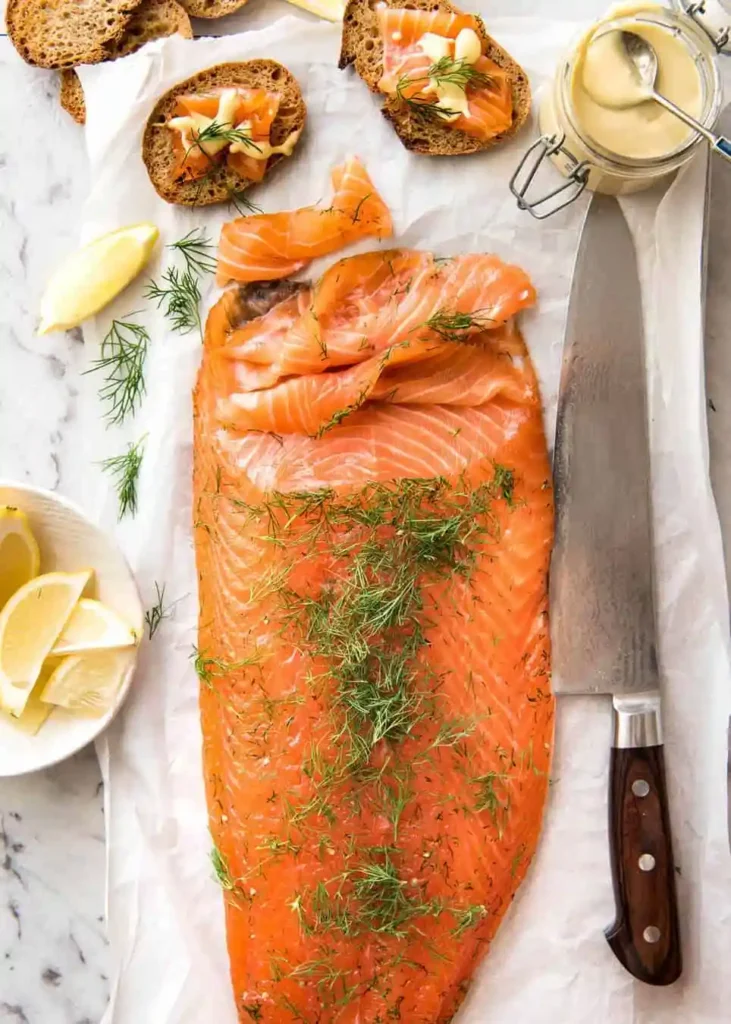
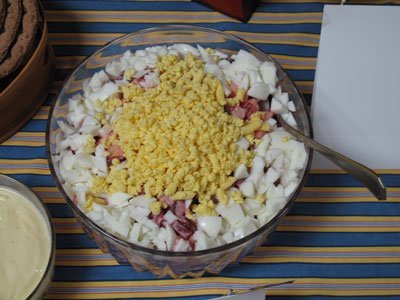
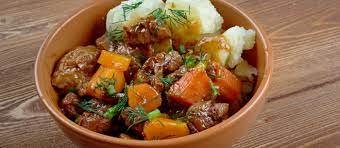
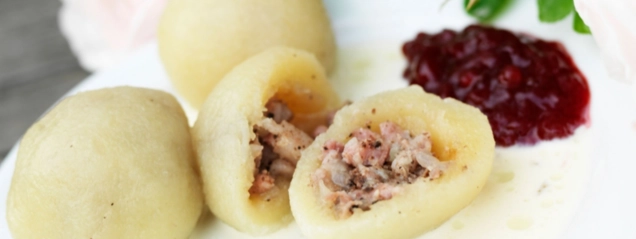
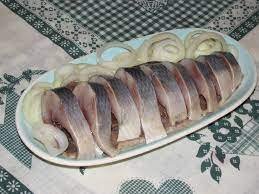
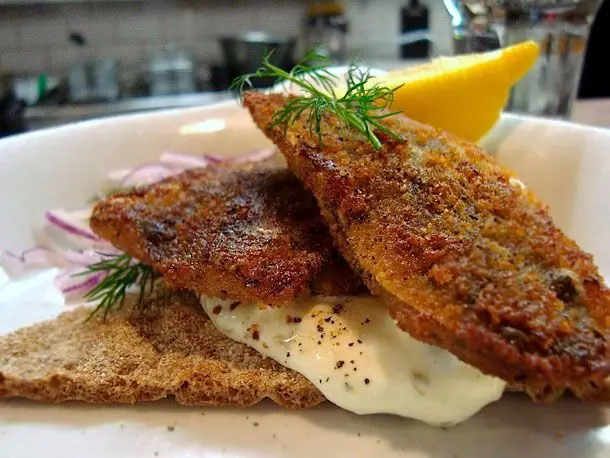
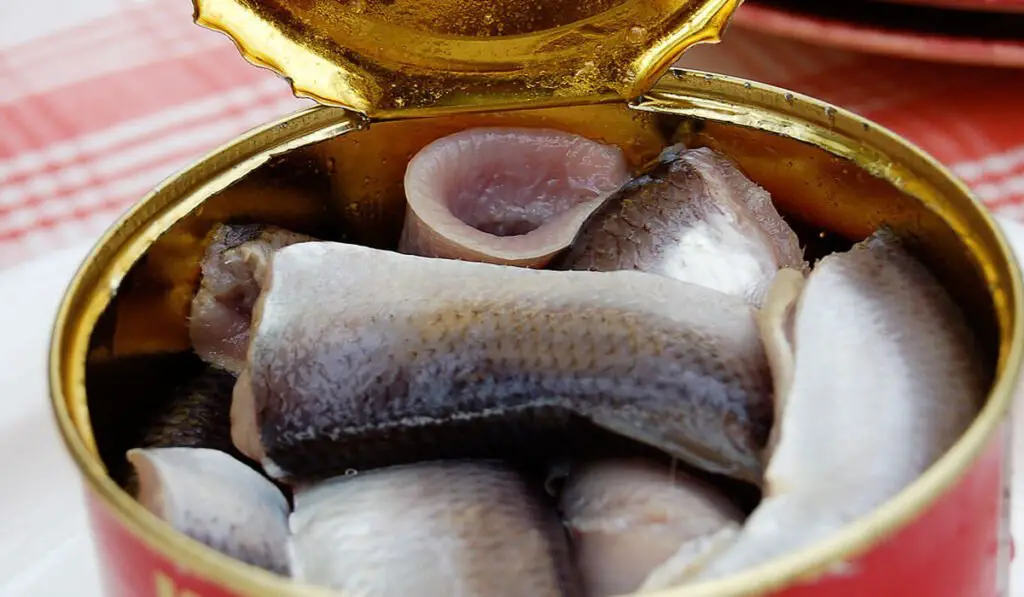
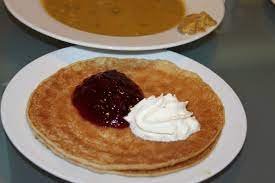

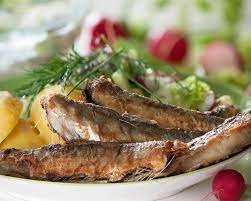
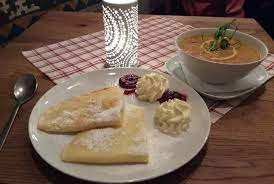
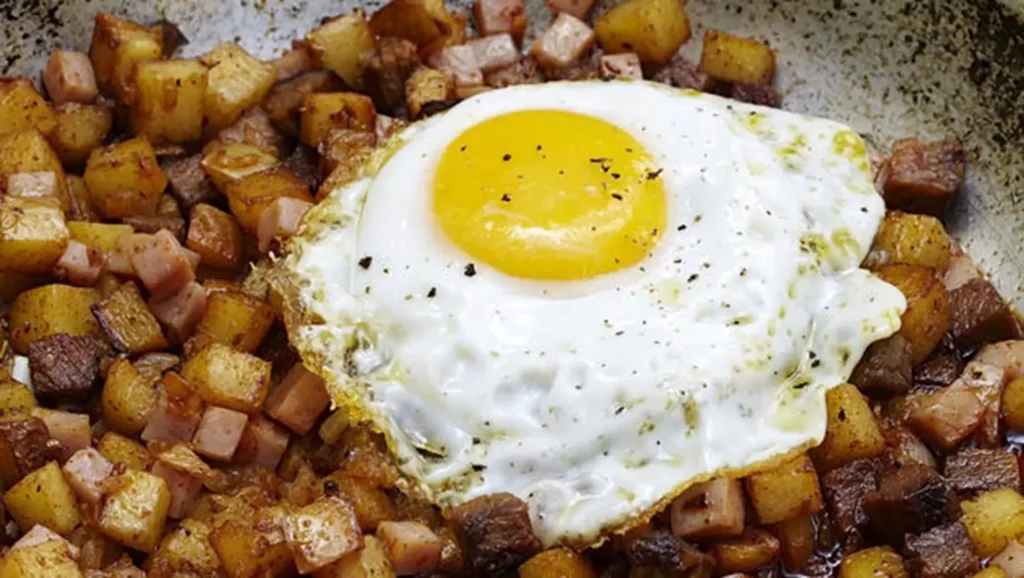


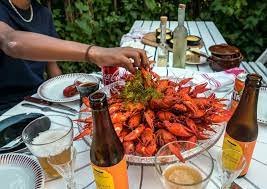
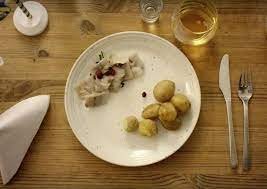
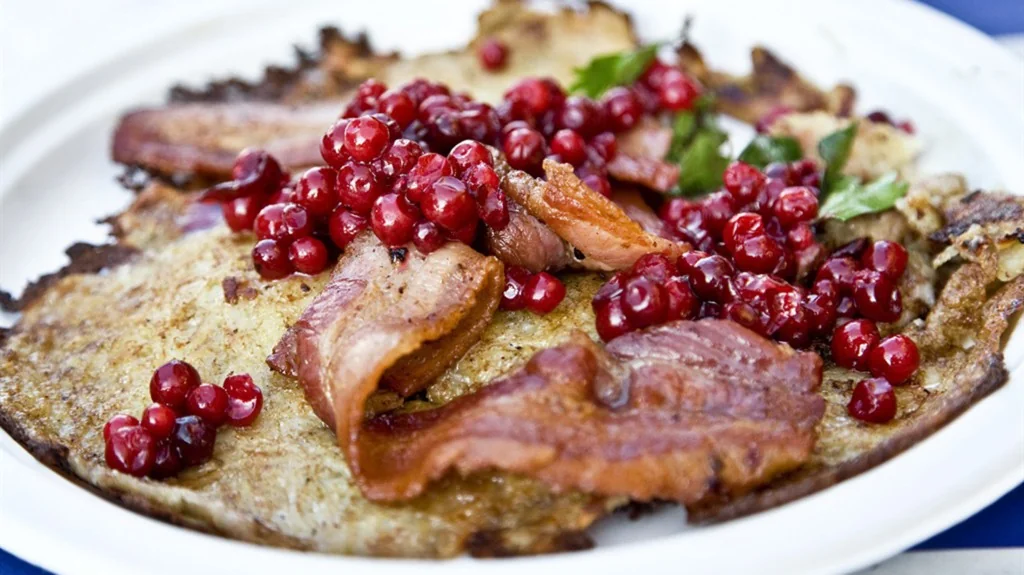
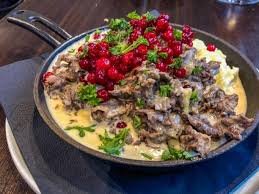
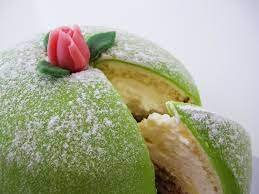

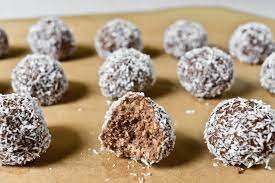
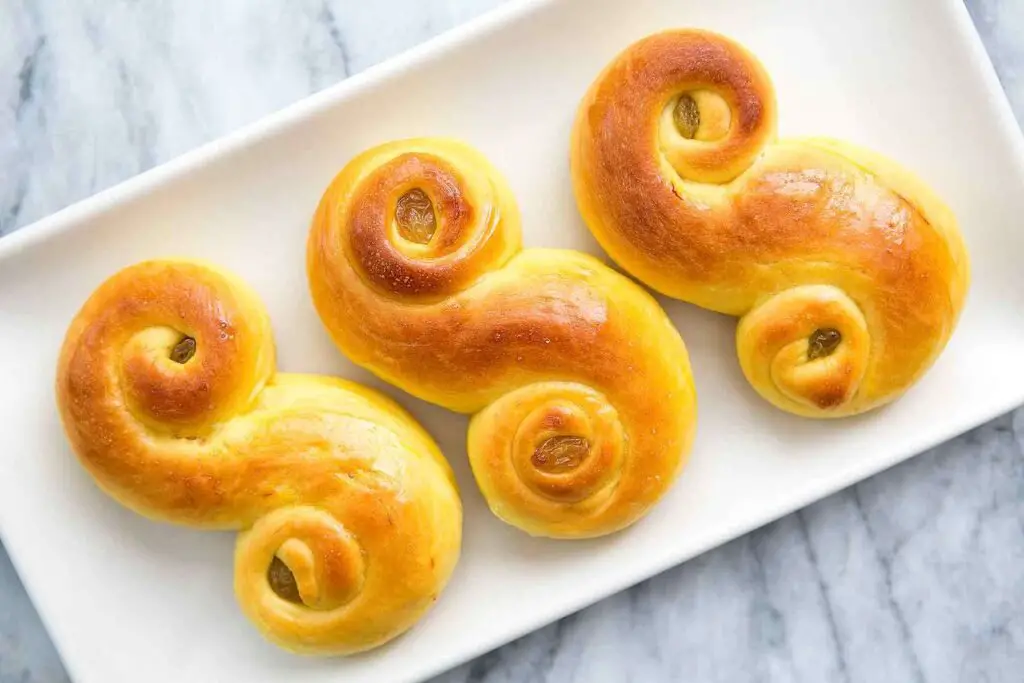
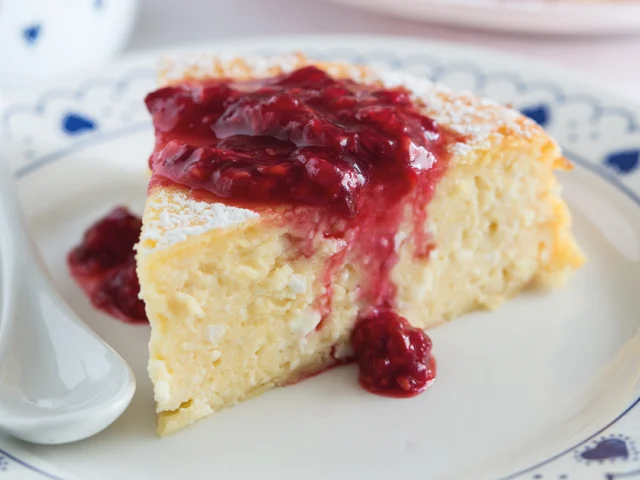
You may also Enjoy the Following Articles
- North and South American Cuisine – A Culinary Expedition
- European Cuisine: Savor the Continent’s Best Culinary Secrets!
- African Cuisine: Discover the Bold Flavors & Global Charm!
- Asian Cuisine Unlock its Secrets – Taste, Health & Global Influence!
- Oceania Cooking: A Culinary Journey Through the Pacific
Read on to explore the captivating world of Swedish food, from its historical roots to the modern culinary landscape.
Swedish’s History and Its Effect on the Cuisine

Sweden is a Nordic country with a rich and diverse history that spans from the Viking Age to the modern era. Sweden has been influenced by various cultures, religions, and political movements throughout its history, and this has also shaped its cuisine.
One of the most distinctive features of Swedish cuisine is the use of dairy products, especially butter, cheese, and cream. This is partly due to the abundance of cows and goats in the country, as well as the long winters that require high-calorie foods.
Dairy products are used in many dishes, such as meatballs, pancakes, soups, and sauces. Another important aspect of Swedish cuisine is the use of fish and seafood, especially herring, salmon, and crayfish.
The country has a long coastline and many lakes and rivers, which provide a variety of aquatic resources. Fish and seafood are often preserved by salting, smoking, pickling, or fermenting, and are served with bread, potatoes, or crispbread.
Sweden also has a strong tradition of baking, especially bread and pastries. Bread is a staple food and there are many types of bread, such as rye, wheat, oat, and barley.
Pastries are often sweet and flavored with spices, such as cinnamon, cardamom, and saffron. Some of the most popular pastries are cinnamon rolls, saffron buns, and semlor.
Swedish cuisine reflects the history and culture of the country, and it is also influenced by the seasons and the local ingredients.
The cuisine is a blend of simplicity and sophistication, and it offers a variety of flavors and textures to suit different tastes and occasions.
How Swedish’s Climate and Geography Influence Swedish Food

The climate and geography of Sweden have a significant influence on its food culture. Some of the ways they affect Swedish food are:
- The cold and long winters require high-calorie and nutritious foods, such as dairy products, meat, and root vegetables. These foods are also easy to store and preserve through salting, smoking, pickling, or fermenting.
- The abundant lakes, rivers, and coastline provide a variety of fish and seafood, such as herring, salmon, and crayfish. These are often served with bread, potatoes, or crispbread, which are staple foods in Sweden.
- The fertile soil and short but intense summer season produce high-quality grains and vegetables, such as rye, wheat, oats, barley, cabbage, and carrots. These are used to make bread, pastries, soups, and salads.
- The diverse geography and regional traditions contribute to the variety and uniqueness of Swedish cuisine. For example, the northern regions are influenced by the Sami culture and use more reindeer meat and berries, while the southern regions are influenced by the continental and Mediterranean cuisines and use more spices and herbs.
Swedish cuisine reflects the history and culture of the country, as well as the seasons and the local ingredients. It is a blend of simplicity and sophistication, and it offers a range of flavors and textures to suit different tastes and occasions. 😊
Understanding the Essence of Swedish Cuisine
Swedish cuisine embodies simplicity, precision, and quality. It celebrates local produce, meticulous preparation, and a deep appreciation for culinary traditions. Communal dining is a key aspect, fostering a sense of togetherness.
Lingonberries can be Paired with Anything
Lingonberries are versatile, much like ketchup and mustard. Commonly paired with dishes such as meatballs, pancakes, porridge, and black pudding (blodpudding), lingonberry jam adds a sweet touch.
Despite its sweetness, it’s seldom spread on bread. Thanks to the freedom granted by the right of public access (allemansrätten). This allows everyone to roam and appreciate nature, many Swedes learn to pick lingonberries in the forest. These tiny tart red fruits are then transformed into a jam-like preserve,
Flatbread – what’s your preferred topping?
Besides bread and butter, crispbread (knäckebröd) is a common accompaniment to main meals. Once considered a humble fare, crispbread has been a Swedish staple for over 500 years, boasting a shelf life of at least a year when stored correctly and maintaining its status as one of the most versatile food items.
Available in various shapes, thicknesses, and flavors, crispbread fills entire store shelves. It serves as a canvas for toppings ranging from sliced boiled eggs with tube caviar (ideal for breakfast) to ham, cheese, and cucumber slices (perfect for lunch) or simply plain butter as a dinner side dish.
Swedish Culinary Traditions

Swedish culinary traditions are rooted in the country’s history, geography, and culture. Sweden is a Nordic nation with a long and diverse history that spans from the Viking Age to the modern era.
Sweden has been influenced by various cultures, religions, and political movements throughout its history, and this has also shaped its cuisine.
One of the most distinctive features of Swedish cuisine is the smörgåsbord, a buffet-style meal that consists of a variety of hot and cold dishes, such as herring, meatballs, cheese, bread, salads, and desserts.
The smörgåsbord is a festive occasion that is usually served on national holidays, such as Easter, Midsummer, and Christmas. The smörgåsbord reflects the diversity and abundance of Swedish food, as well as the social and communal aspects of eating.
Local and Seasonal Ingredients
Another important aspect of Swedish cuisine is the use of local and seasonal ingredients, such as dairy products, fish, seafood, meat, grains, vegetables, fruits, and berries. Sweden has a cold and long winter, which requires high-calorie and nutritious foods, such as butter, cheese, cream, meat, and potatoes.
The country also has a short but intense summer, which produces high-quality grains and vegetables, such as rye, wheat, oats, barley, cabbage, and carrots. It also has a rich variety of wild berries, such as lingonberries, blueberries, raspberries, and cloudberries, which are used to make jams, pies, and soups.
It also has a strong tradition of baking, especially bread and pastries. Bread is a staple food in Sweden, and there are many types of bread, such as rye, wheat, oat, white, dark, sourdough, and whole grain, and including flatbreads and crispbreads.

Pastries are often sweet and flavored with spices, such as cinnamon, cardamom, and saffron. Some of the most popular pastries are cinnamon rolls, saffron buns, and semlor. Swedish cuisine also incorporates some international influences, such as French, German, Italian, and Mediterranean cuisines.
Examples
Some examples of dishes that are inspired by or adapted from other cuisines are toast skagen (shrimp salad on toast), pytt i panna (hash of meat and potatoes), pizza, kebab, and falafel.
Swedish cuisine is a reflection of the history and culture of the country, as well as the seasons and the local ingredients. It is a blend of simplicity and sophistication, and it offers a range of flavors and textures to suit different tastes and occasions.
What Are the Health Implications of Swedish Food
The health of the Swedish population and the health implications of Swedish food are complex and multifaceted topics. Here are some key points to consider:
Swedish Population Health
According to the latest statistics, the average life expectancy at birth in Sweden is 84.3 years for females and 80.9 years for males. This is among the highest in the world and reflects the high quality of healthcare and social welfare in Sweden.
Health Challenges
There are also some health challenges and inequalities in Sweden. For example, obesity and overweight are prevalent among adults and children, and are associated with increased risks of chronic diseases, such as diabetes, cardiovascular diseases, and some cancers.
Moreover, there are significant differences in health outcomes and life expectancy between different socioeconomic groups, regions, and genders.
Swedish Dietary Habits
The eating habits among adults in Sweden have improved in many ways since the 1990s, but the intake of vegetables, fruit, whole grains and vegetable oils, as well as seafood, is still too low.
At the same time, intake of sweet drinks, pastries, fat dairy and salt is too high, as well as consumption of red meat. These dietary patterns are not optimal for health and may contribute to the burden of disease in Sweden.
Environmental Impacts of the Average Swedish Diet
The environmental impacts of the average Swedish diet are also considerable and exceed the sustainable limits for greenhouse gas emissions, cropland use, nitrogen and phosphorus application, and biodiversity loss.
These impacts affect the resilience and sustainability of the food systems, both in Sweden and globally, and may have negative consequences for human health and well-being in the long term. 😊
Sources
- Average life expectancy at birth in Sweden 2012-2022, by gender
- State of health in Sweden – statistics & facts
- Healthy lifestyles and healthy nutrition
- How sustainable are Swedes’ eating habits?
Sweden’s National Dish
While Sweden lacks a singular national dish, dishes like meatballs and smorgasbord are culturally significant. The diverse culinary scene reflects the absence of a single defining dish.
Exploring Swedish Ingredients: The Flavors of Swedish Cuisine
Swedish ingredients are a reflection of the country’s history, geography, and culture. Sweden has a diverse and abundant food culture that combines local produce and global flavors. Some of the most common and unique ingredients in Swedish cuisine are:
Swedish Dairy Products

Sweden is known for its high-quality dairy products, especially butter, cheese, and cream. Dairy products are used in many dishes, such as meatballs, pancakes, soups, and sauces. Some of the most popular cheeses are
- Västerbotten (a hard, aged cheese)
- Prästost (a semi-hard cheese with a mild flavor)
- Brunost (a brown, caramelized cheese).
Fish and seafood
Some of the most famous dishes are gravlax (cured salmon with dill and mustard sauce), Janssons frestelse (a casserole of potatoes, onions, anchovies, and cream), and kräftskiva (a crayfish party with boiled crayfish, bread, cheese, and snaps).
Sweden has a long coastline and many lakes and rivers, which provide a variety of fish and seafood, such as herring, salmon, and crayfish. Fish and seafood are often preserved by salting, smoking, pickling, or fermenting, and are served with bread, potatoes, or crispbread.
Bread and Pastries
This is a staple food in Sweden, and there are many types of bread, such as rye, wheat, oat, and barley. It is often eaten with butter, cheese, jam, or cold cuts. Pastries are often sweet and flavored with spices, such as cinnamon, cardamom, and saffron.
Some of the most popular pastries are kanelbullar (cinnamon rolls), lussekatter (saffron buns), and semlor (cream-filled buns with almond paste).
Berries and Fruits

Sweden has a rich variety of wild berries, such as lingonberries, blueberries, raspberries, and cloudberries. Berries are used to make jams, pies, and soups, or eaten fresh with whipped cream. Fruits are also grown in Sweden, such as apples, pears, plums, and cherries.
Fruits are used to make desserts, juices, and wines, or eaten raw as snacks.
Root vegetables and grains
Root vegetables, such as potatoes, carrots, turnips, and swedes, are grown in Sweden and are used to make soups, salads, and mashes. Grains, such as rye, wheat, oats, and barley, are also cultivated in Sweden and are used to make bread, porridge, and crispbread.
Root vegetables and grains are often eaten as side dishes or main courses, depending on the season and the dish.
Swedish Recipes – Great Examples to Try at Home
Convinced? Swedish cooking technique are easy to try out in your home. Here are some of the most popular recipes for you to have a go at.
Starter Courses
Check out the following tasty starter courses.
Swedish food – Herring Smorgasbord
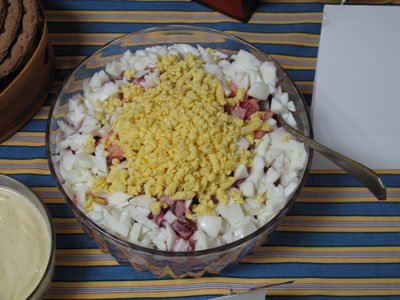
History and Background
Herring Smorgasbord, or Sillbord, is a quintessential Swedish dish rooted in the country’s rich maritime history. Herring has been a staple in the Swedish diet for centuries, and the tradition of marinating and pickling herring has given rise to a diverse array of herring-based dishes.
A Herring Smorgasbord typically includes various preparations of herring, served alongside an assortment of complementary accompaniments, creating a flavorful and visually appealing spread.
Ingredients:
For the Herring Preparations:
- Matjes Herring (young herring, typically served with a light brine)
- Pickled Herring (marinated in a vinegar-based solution)
- Mustard Herring (herring in a creamy mustard sauce)
- Onion Herring (herring with sliced onions)
- Curry Herring (herring in a spiced curry sauce)
For the Accompaniments:
- Boiled Potatoes, sliced
- Crispbread or Rye Bread
- Sour Cream
- Red Onion, thinly sliced
- Fresh Dill, chopped
- Hard-Boiled Eggs, sliced
- Pickles and Pickled Vegetables
Recipe:
Preparing the Herring:
Matjes Herring:
- Serve Matjes Herring as is, with minimal additional seasoning to highlight its delicate flavor.
Pickled Herring:
- Rinse pickled herring to remove excess brine.
- Serve with red onion slices and a sprinkle of fresh dill.
Mustard Herring:
- Mix herring with a creamy mustard sauce.
- Ensure the sauce has a balance of sweetness and tanginess.
Onion Herring:
- Combine herring with thinly sliced onions.
- Marinate in a vinegar-based solution for a few hours.
Curry Herring:
- Prepare a spiced curry sauce and mix it with herring.
Assembling the Herring Smorgasbord:
Arrange the Herring:
- Lay out each herring preparation on a large serving platter.
Prepare Accompaniments:
- Boil potatoes and slice them.
- Arrange crispbread or rye bread on the side.
Garnish:
- Garnish the herring with red onion slices and chopped fresh dill.
Include Additional Accompaniments:
- Arrange sour cream, hard-boiled egg slices, and pickles on the platter.
Serve Fresh:
- Present the Herring Smorgasbord fresh and at room temperature.
Enjoy the Vibrancy of Herring Smorgasbord!
Herring Smorgasbord is a celebration of the diverse and delectable ways herring can be enjoyed. Whether you’re savoring the mildness of Matjes Herring or indulging in the tangy richness of Pickled Herring, each bite tells a story of Swedish culinary heritage. Enjoy this flavorful spread as part of a festive gathering or a traditional Smorgasbord, immersing yourself in the vibrant tastes of Sweden.
Herring Smorgasbord Recipe -Best Drinks
Pair with aquavit or a crisp white wine.
Swedish food – Gravlax
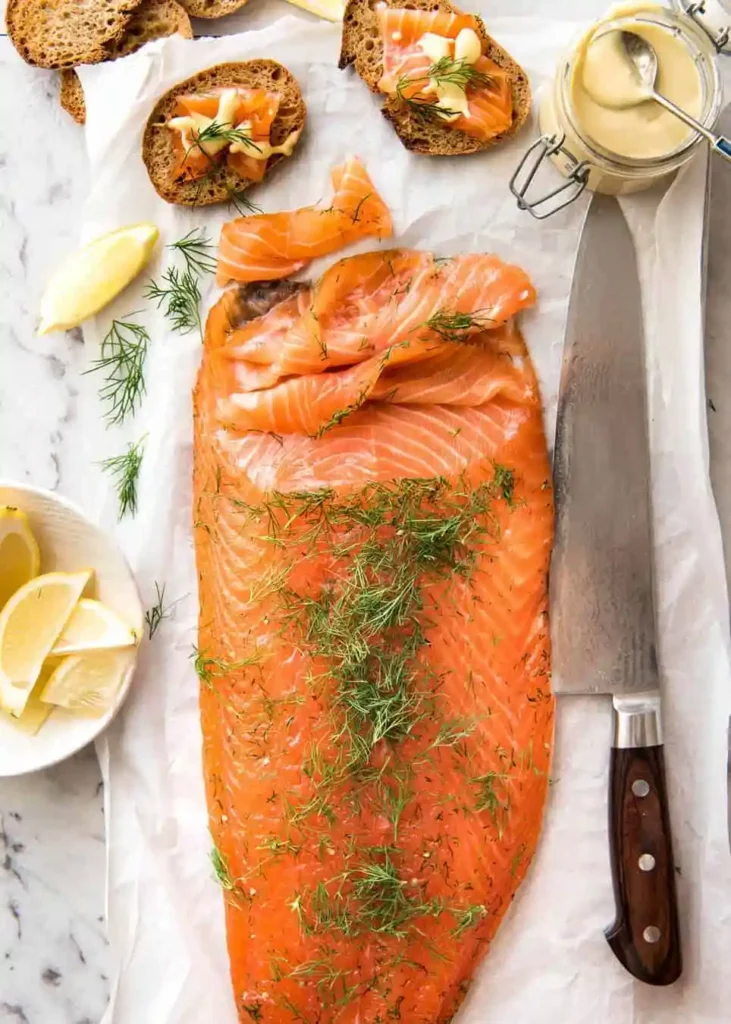
History and Background
Gravlax is a traditional Swedish dish with roots dating back to the Middle Ages. The name “gravlax” translates to “buried salmon,” referring to the ancient practice of preserving fish by burying it in the sand. Today, Gravlax is a popular delicacy made by curing salmon with a mixture of sugar, salt, and dill, resulting in a flavorful and silky-smooth fish.
Ingredients:
For the Gravlax:
- 1 pound salmon fillet, skin-on, pin bones removed
- 1/2 cup white sugar
- 1/2 cup sea salt
- 1 teaspoon black pepper, coarsely ground
- 1 bunch fresh dill, chopped
For the Mustard Sauce:
- 2 tablespoons Dijon mustard
- 1 tablespoon sugar
- 1 tablespoon white wine vinegar
- 1/2 cup vegetable oil
- Salt and pepper to taste
Recipe:
Preparing the Gravlax:
Check Salmon Fillet:
- Ensure the salmon fillet is fresh, pin bones removed, and skin-on.
Mix Curing Mixture:
- In a bowl, combine sugar, sea salt, black pepper, and chopped dill.
Cure the Salmon:
- Place a large piece of plastic wrap on a clean surface.
- Lay the salmon fillet, skin-side down, on the plastic wrap.
- Cover the flesh side with the curing mixture.
Wrap and Refrigerate:
- Wrap the salmon tightly in plastic wrap.
- Place it in a shallow dish, and refrigerate for 48-72 hours, turning the salmon every 12 hours.
Making the Mustard Sauce:
- In a bowl, whisk together Dijon mustard and sugar.
- Gradually whisk in white wine vinegar.
- Slowly drizzle in vegetable oil while whisking continuously until the sauce thickens.
- Season the mustard sauce with salt and pepper to taste.
Serving Gravlax:
Slice the Gravlax:
- After the curing process, unwrap the salmon and scrape off the curing mixture.
- Using a sharp knife, slice the Gravlax thinly at a slight angle.
Plate and Garnish:
- Arrange the sliced Gravlax on a serving platter.
- Garnish with additional chopped dill.
Serve with Mustard Sauce:
- Serve the Gravlax with the homemade mustard sauce on the side.
Enjoy the Elegance of Gravlax!
Gravlax embodies the art of preserving and elevating salmon into a delicacy. With its perfect balance of sweetness, saltiness, and dill freshness, Gravlax is a culinary masterpiece that showcases the excellence of Swedish seafood traditions. Serve it as an appetizer, part of a brunch spread, or in a traditional Smörgåsbord for a taste of Scandinavian sophistication.
Best Drinks: Enjoy with a glass of chilled Akvavit.
Swedish food – Main Courses
Sweden is renowned for its tasty and filling main courses.
Swedish Food – Blodpudding

History and Background
Blodpudding, or blood pudding, is a traditional Swedish dish with roots in medieval cuisine. Originally a way to utilize all parts of an animal, it has evolved into a popular and distinctive dish in Swedish culinary culture.
Despite its name, it’s not a dessert but a savory blood sausage.
Ingredients:
- Blood Mixture:
- 2 cups fresh pig’s blood
- 1 cup milk
- 1 cup flour
- 1 cup breadcrumbs
- 1 onion, finely chopped
- 1 teaspoon salt
- 1/2 teaspoon white pepper
- 1/2 teaspoon ground ginger
- 1/4 teaspoon ground cloves
- 1/4 teaspoon ground allspice
- Additional Ingredients:
- 1/2 cup butter, for frying
- Lingonberry jam, for serving (optional)
Recipe:
Prepare the Blood Mixture:
- In a large bowl, combine fresh pig’s blood and milk.
- Gradually whisk in flour to create a smooth consistency.
- Add breadcrumbs, chopped onion, salt, white pepper, ginger, cloves, and allspice.
- Mix thoroughly until well combined.
Cooking Process:
- In a large, heavy-bottomed pot, heat the butter over medium heat.
- Carefully pour the blood mixture into the pot.
- Stir constantly to prevent lumps from forming.
- Continue cooking over low heat, stirring consistently, until the mixture thickens.
Sausage Formation:
- Once the mixture has thickened to a consistency suitable for forming sausages, remove it from heat.
- Allow the mixture to cool slightly, making it easier to handle.
- Shape the mixture into individual sausages or a large loaf.
Cooking the Sausages:
- In a frying pan, heat more butter over medium-high heat.
- Add the sausages and cook until browned on all sides.
- Ensure the sausages are cooked through, with an internal temperature reaching at least 160°F (71°C).
Serving:
- Blodpudding is traditionally served warm.
- Slice the sausages and serve with lingonberry jam on the side, if desired.
Enjoy the Authentic Taste of Blodpudding!
Blodpudding is a unique dish that reflects the historical resourcefulness of Swedish cuisine. When served with lingonberry jam, it offers a balance of savory and slightly sweet flavors, providing a true taste of traditional Swedish dining.
Swedish food – Surströmming

History and Background:
Hold your noses, folks! Surströmming, the Swedish sensation that leaves both locals and outsiders in a state of utter cringe, is here to tickle your taste buds and assault your olfactory senses.
Picture this: the pungent tradition of cracking open cans filled with fermented sour herring kicks off every late August, a quirky custom that took root in the 1800s in the Norrland region and has managed to linger on like a stubborn smell ever since.
The name “surströmming” translates to “sour herring.”
It’s a whiffy adventure that has stood the test of time – a true odorous masterpiece!
Swedish food – Surströmming Ingredients
Baltic Herring:
- The key ingredient, typically herring, is caught during the spring when the fish have a higher fat content.
- Used in abundance during the initial salting process.
Fermentation Starter:
- Often a mix of bacteria and yeast that kickstarts the fermentation process.
Water:
- Used in the brining and fermentation stages.
Swedish food – Surströmming Recipe
Initial Salting and Fermentation:
- Catch fresh herring during the spring when the fish are in season.
- Clean the herring, removing scales and guts.
- Layer the fish in a barrel or similar container, sprinkling salt between each layer.
- Add water to the container to cover the fish.
- Seal the container and let the herring ferment for several weeks to months. The fermentation process involves the growth of lactic acid bacteria, giving the dish its distinctive flavor.
Canning and Further Fermentation:
- After the initial fermentation, remove the herring from the barrel and place them in cans.
- Add a small amount of brine (saltwater) to the cans before sealing them.
- Allow the cans to undergo further fermentation for several months.
Serving Surströmming:
- Surströmming is typically served in late summer or early autumn.
- When ready to serve, open the can carefully, as the contents are under pressure due to ongoing fermentation.
- The dish is often enjoyed with soft flatbread, butter, almond potatoes, red onions, and sometimes sour cream.
- Some prefer to eat surströmming outdoors due to its strong aroma.
Eating Traditions
- Surströmming is often eaten in a social setting, with friends and family.
- It’s customary to accompany the meal with schnapps or beer.
Note: Surströmming has a strong and pungent smell, which can be off-putting to some. It’s an acquired taste, and enthusiasts appreciate its unique and intense flavors.
Swedish food – ärtsoppa och pannkakor
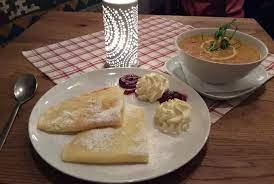
History and Background
Ärtsoppa och Pannkakor – Pea Soup and Pancakes, is a classic Swedish dish with historical roots dating back centuries. Traditionally served on Thursdays, this meal has cultural significance and was associated with Christian traditions. The combination of hearty pea soup and sweet, thin pancakes creates a satisfying and balanced meal.
Swedish food – ärtsoppa och pannkakor – Ingredients:
For Ärtsoppa (Pea Soup):
- 1 cup yellow split peas, dried
- 1 large onion, chopped
- 1 carrot, diced
- 1 leek, sliced
- 2 celery stalks, chopped
- 1 bay leaf
- 1 smoked pork hock or ham bone
- 6 cups water
- Salt and pepper to taste
For Pannkakor (Pancakes):
- 1 cup all-purpose flour
- 2 tablespoons sugar
- 1/2 teaspoon salt
- 2 eggs
- 1 1/2 cups milk
- Butter for frying
Swedish food – ärtsoppa och pannkakor – Recipe:
Making Ärtsoppa:
Prepare Peas:
- Rinse the yellow split peas thoroughly.
Cook Vegetables:
- In a large pot, sauté chopped onion, diced carrot, sliced leek, and chopped celery until softened.
- Add rinsed split peas, bay leaf, smoked pork hock or ham bone, and water to the pot.
- Bring the mixture to a boil, then reduce heat and simmer for 1.5 to 2 hours, or until the peas are tender.
- Season with salt and pepper to taste. Remove the bay leaf.
- Serve the pea soup warm, with a piece of ham on the side.
Making Pannkakor:
Combine Dry Ingredients:
- In a mixing bowl, whisk together flour, sugar, and salt.
Add Wet Ingredients:
- Beat in eggs, then gradually add milk, whisking until the batter is smooth.
Rest the Batter:
- Let the batter rest for at least 30 minutes.
Cook Pancakes:
- Heat a skillet or frying pan over medium heat. Add a small amount of butter.
- Pour a ladle of batter into the pan, swirling to coat the bottom evenly.
- Cook until the edges are golden, then flip and cook the other side.
Repeat:
- Repeat until all the batter is used, stacking the pancakes.
- Serve the pancakes warm, either on the side or as a delightful dessert.
Enjoy the Swedish Comfort of Ärtsoppa och Pannkakor!
Ärtsoppa och Pannkakor encapsulates the heartwarming essence of Swedish comfort food. Whether enjoyed on a Thursday, following tradition, or at any time craving a wholesome and satisfying meal, this combination of hearty pea soup and delicate pancakes brings together flavors and cultural history in a delightful culinary experience.
Swedish Food – kräftskivor

History and Background:
- Kräftskivor, also known as crayfish parties, are a traditional Swedish celebration typically held in August.
- The tradition has its roots in the 19th century when crayfish harvesting was limited to late summer.
- Initially, crayfish parties were an aristocratic tradition, but they became more widespread in the 20th century.
Swedish Food – kräftskivor Ingredients
Crayfish
- Freshwater crayfish are the star of the dish.
- The number of crayfish per person can vary, but a common estimate is around 5-10 per person.
- Dill: Fresh dill is a crucial herb used in various forms during the preparation.
- Salt: Used for seasoning the water for boiling crayfish.
- Sugar: Often added to the water to balance the flavors.
- Beer: Traditional beverages like beer are commonly served during kräftskivor.
- Aquavit: A Scandinavian spirit, often flavored with caraway or dill, is a popular choice.
- Västerbotten Cheese: A strong-flavored cheese often served with bread.
- Bread : Crispbread or a variety of fresh bread is served on the side.
- Cheese Slices: Additional cheese slices may be offered.
- Sour Cream: Sometimes used as a dip for the crayfish.
- Potatoes: Boiled and served as a side dish.
- Caviar: Sometimes served with eggs and sour cream as a side dish.
Swedish Food – kräftskivor Recipe
Boiling Crayfish:
- Clean the crayfish thoroughly, removing mud and debris.
- Fill a large pot with water, add salt, sugar, and a generous amount of dill.
- Bring the water to a boil and add the crayfish.
- Boil for around 10 minutes or until the crayfish turn bright red.
- Remove crayfish from the pot and let them cool.
Serving:
- Arrange a traditional kräftskiva table with a checkered tablecloth and decorations.
- Serve the crayfish cold on a large platter, garnished with fresh dill.
- Provide bowls of salt, pepper, and bread on the table.
- Offer Västerbotten cheese, sliced cheese, and crispbread on the side.
- Boiled potatoes and a side of caviar with eggs and sour cream can also be served.
- Pair the meal with beer or aquavit.
Traditions:
- Participants often wear funny hats, bibs, and other festive accessories.
- A lively atmosphere with singing and drinking is typical during kräftskivor.
Remember, while the ingredients and basic steps are fairly consistent, the specific details of the celebration may vary based on regional and personal preferences.
Swedish food – Tunnbrödsrulle

History and Background
Tunnbrödsrulle, often referred to as a “Swedish Hot Dog” or “Tunnbrödsrulle med korv,” is a popular street food in Sweden. This unique dish features a grilled or fried sausage wrapped in soft flatbread, typically filled with mashed potatoes, a creamy shrimp salad, and various toppings. It has become an iconic and beloved fast food option in Sweden.
Ingredients:
For the Tunnbröd (Flatbread):
- 2 cups all-purpose flour
- 1 cup whole wheat flour
- 1 teaspoon salt
- 1 cup milk
- 2 tablespoons butter, melted
- 1 teaspoon baking powder
For the Filling:
- Grilled or fried sausages (commonly falukorv or wienerkorv)
- Mashed potatoes
- Creamy shrimp salad (shrimp, mayonnaise, crème fraîche, dill)
- Mustard
- Ketchup
- Pickles (optional)
- Fried onions (optional)
Recipe:
Making the Tunnbröd:
Prepare the Dough:
- In a large bowl, combine all-purpose flour, whole wheat flour, salt, and baking powder.
- Gradually add milk and melted butter, mixing until a smooth dough forms.
Roll Out the Dough:
- Divide the dough into smaller portions and roll each into a thin, round flatbread.
Cook the Tunnbröd:
- On a hot griddle or skillet, cook each flatbread for a minute on each side until lightly browned.
Wrap and Keep Warm:
- As each flatbread is cooked, wrap them in a clean kitchen towel to keep them warm and pliable.
Assembling Tunnbrödsrulle:
Prepare the Sausages:
- Grill or fry the sausages until fully cooked.
Assemble the Tunnbrödsrulle:
- Place a sausage on a flatbread.
- Add a generous layer of mashed potatoes on one side of the sausage.
Top with Shrimp Salad:
- Spoon a dollop of creamy shrimp salad onto the mashed potatoes.
Add Condiments and Toppings:
- Drizzle mustard and ketchup over the filling.
- Optionally, add pickles and fried onions for extra flavor and crunch.
Fold and Serve:
- Fold the flatbread around the filling, creating a wrap.
- Secure with a piece of parchment paper or foil for easier handling.
Enjoy the Portable Delight of Tunnbrödsrulle!
Tunnbrödsrulle offers a delightful combination of textures and flavors, making it a beloved street food choice in Sweden. Whether enjoyed on the go or at outdoor events, this portable treat encapsulates the essence of Swedish fast food with its satisfying blend of sausages, mashed potatoes, and creamy shrimp salad.
Best Drinks: Pair with a cold beer or traditional lingonberry juice.
Swedish Food – Kalops

Swedish Kalops: A Hearty Stew with Historical Roots
History and Background: Kalops, a classic Swedish dish, has historical roots dating back to the 18th century. Originally a humble dish among the working class, it has evolved into a beloved comfort food.
The name “Kalops” itself is derived from the Greek words “kalos” meaning beautiful and “opsis” meaning appearance, highlighting its aesthetic appeal.
Swedish Food – Kalops Ingredients
- 1.5 kg beef chuck, cubed
- 2 onions, thinly sliced
- 3 carrots, peeled and sliced
- 8-10 whole allspice berries
- 4 bay leaves
- 10 black peppercorns
- 3 tbsp butter
- 3 tbsp all-purpose flour
- 1.5 liters beef broth
- 2 tbsp red wine vinegar
- Salt and pepper to taste
- Lingonberry jam for serving
- Mashed potatoes or boiled potatoes for serving
Swedish Food – Kalops Ingredients Recipe
Preparing the Beef
- Cubing Beef:
- Cut the beef chuck into evenly sized cubes.
Cooking the Stew
- Sautéing Onions:
- In a large pot, melt butter and sauté thinly sliced onions until translucent.
- Adding Beef:
- Add the beef cubes to the pot, allowing them to brown on all sides.
- Sprinkling Flour:
- Sprinkle all-purpose flour over the beef and onions, stirring continuously to create a roux.
- Pouring Broth:
- Gradually pour in the beef broth, ensuring it covers the beef.
- Seasoning:
- Add allspice berries, bay leaves, black peppercorns, salt, and pepper. Stir well.
- Simmering:
- Bring the stew to a simmer, then reduce heat, cover, and let it simmer for 2-3 hours until the beef is tender.
Serving Kalops
- Adding Carrots:
- Add sliced carrots to the stew during the last 30 minutes of cooking.
- Adjusting Flavor:
- Adjust the seasoning, adding red wine vinegar for a subtle acidity.
- Garnishing and Serving:
- Serve the Kalops hot, garnished with fresh parsley, and accompanied by lingonberry jam and potatoes.
Serving Size: 6 people
Estimated Cooking Time: 2.5 – 3 hours
Calories (per serving): Approximately 400 calories
Swedish Kalops is a wholesome stew that captures the essence of traditional Swedish comfort food. Indulge in its rich flavors, tender beef, and aromatic spices for a satisfying dining experience.
Swedish Food – Pickled Herring

Swedish Pickled Herring: A Culinary Tradition
History and Background: Pickled Herring holds a special place in Swedish gastronomy, dating back centuries. This traditional dish emerged as a way to preserve fish in a land surrounded by abundant waters.
Today, it remains a beloved part of Swedish smorgasbord culture, often enjoyed during festive occasions.
Swedish Food – Pickled herring Ingredients
Pickling Marinade:
- 500g fresh herring fillets, cleaned and deboned
- 1 cup white vinegar
- 1 cup water
- 1/2 cup sugar
- 1 tablespoon salt
- 10 black peppercorns
- 5 bay leaves
- 1 red onion, thinly sliced
- 1 carrot, thinly sliced
- 1 apple, thinly sliced
Swedish Food – Pickled herring Recipe
Preparing the Herring
- Clean and Debone:
- Ensure the herring fillets are cleaned and deboned, leaving only the succulent meat.
Making the Pickling Marinade
- Prepare Marinade:
- In a saucepan, combine white vinegar, water, sugar, salt, peppercorns, and bay leaves. Bring to a boil, then let it cool.
- Layering Ingredients:
- In a clean jar, layer the herring fillets with slices of red onion, carrot, and apple.
- Pouring Marinade:
- Pour the cooled pickling marinade over the herring and vegetable layers, ensuring they are fully submerged.
Pickling Process
- Refrigerate:
- Seal the jar and refrigerate for at least 24 hours to allow the flavors to meld.
Serving Pickled Herring
- Slice and Enjoy:
- After pickling, slice the herring into bite-sized pieces.
- Serve as an appetizer or part of a traditional Swedish smorgasbord.
Serving Size: 4-6 people
Estimated Pickling Time: 24 hours
Calories (per serving): Approximately 200 calories
Swedish Pickled Herring is a delightful blend of sweet and savory, representing the cultural tapestry of Sweden’s culinary heritage. Serve with crispbread, cheese, and a dollop of sour cream for an authentic experience.
Swedish Food – Crayfish boiled in Dill

Swedish Crayfish Boiled in Dill: A Summertime Delicacy
History and Background: Crayfish boiled in dill, known as “kräftor,” is a cherished Swedish tradition, especially during late summer. Originating in the 18th century, this practice was formalized by King Erik XIV. The crayfish party, or “kräftskiva,” celebrates the season, friendship, and good food.
Swedish Food – Crayfish boiled in Dill Ingredients
- 2 kg live crayfish
- 2 bunches fresh dill
- 1 cup coarse sea salt
- 1 cup sugar
- 1 lemon, sliced
- 10 whole allspice berries
- 5 bay leaves
- 1.5 liters water
- 1 bottle of beer (pale lager)
- Crispbread and Västerbotten cheese for serving
Swedish Food – Crayfish boiled in Dill Recipe
Preparing the Crayfish
- Cleaning Crayfish:
- Scrub and clean the live crayfish thoroughly, discarding any dead or damaged ones.
Boiling Mixture
- Infusing Flavors:
- In a large pot, combine water, sea salt, sugar, allspice berries, bay leaves, and half of the fresh dill.
- Squeeze the lemon slices into the mixture and drop them in.
- Bring the mixture to a boil, then let it simmer for 10 minutes.
Cooking Crayfish
- Adding Crayfish:
- Place the live crayfish into the pot.
- Pour in the beer for added flavor.
- Boiling Process:
- Boil the crayfish for approximately 10-12 minutes until they turn a vibrant red color.
Serving Crayfish
- Draining and Plating:
- Drain the crayfish and discard the boiling liquid and aromatics.
- Arrange the crayfish on a serving platter.
- Garnishing:
- Sprinkle the remaining fresh dill over the crayfish for a vibrant finish.
Enjoying the Feast
- Serving Style:
- Serve the crayfish with crispbread and Västerbotten cheese.
Serving Size: 4 people
Estimated Cooking Time: 30 minutes
Calories (per serving): Approximately 200 calories
Swedish Crayfish Boiled in Dill is a delightful summer dish best enjoyed with friends and family. Dive into the festive atmosphere of a kräftskiva, cracking open crayfish shells and savoring the flavorful, aromatic essence of this traditional Swedish treat.
Swedish Food – Köttbullar (Swedish Meatballs)
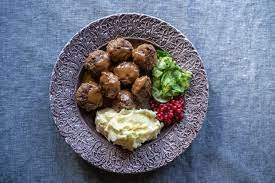
History and Background
Köttbullar, or Swedish Meatballs, have a rich history dating back to the 18th century. Influenced by French cuisine, King Charles XII brought the concept of meatballs to Sweden. Over time, köttbullar became a beloved national dish, often enjoyed with lingonberry sauce and creamy mashed potatoes.
Ingredients:
For the Meatballs:
- 1 pound ground beef or a mix of beef and pork
- 1/2 cup breadcrumbs
- 1/2 cup milk
- 1 small onion, finely chopped
- 1 egg
- Salt and pepper to taste
- Butter or oil for frying
Gravy:
- 2 tablespoons all-purpose flour
- 2 cups beef or vegetable broth
- 1/2 cup heavy cream
- Salt and pepper to taste
Recipe:
Making the Meatballs:
Prepare Breadcrumbs:
- In a bowl, mix breadcrumbs with milk. Let it sit for a few minutes.
Combine Ingredients:
- In a large mixing bowl, combine ground meat, soaked breadcrumbs, chopped onion, egg, salt, and pepper.
- Mix thoroughly until well combined.
Shape Meatballs:
- With wet hands, shape the mixture into small, round meatballs.
Cook Meatballs:
- In a skillet, heat butter or oil over medium-high heat.
- Cook the meatballs until browned on all sides and cooked through.
Making the Gravy:
Prepare Roux:
- In the same skillet, sprinkle flour over the remaining fat.
- Stir to create a roux.
Add Broth:
- Gradually add beef or vegetable broth, stirring constantly to avoid lumps.
Introduce Cream:
- Pour in heavy cream, continuing to stir until the sauce thickens.
Season:
- Season the gravy with salt and pepper to taste.
Serving Köttbullar:
- Arrange the cooked meatballs on a serving platter.
- Pour the creamy gravy over the meatballs.
- Garnish with lingonberry sauce and fresh parsley if desired.
- Köttbullar are traditionally served with creamy mashed potatoes or lingonberry sauce.
Enjoy the Comforting Flavors of Köttbullar!
Köttbullar represent the heart and soul of Swedish comfort food. With a perfect blend of seasoned meat, a creamy gravy, and the sweet-tart kick of lingonberry sauce, this dish is a testament to Swedish culinary traditions. Serve it at family gatherings or enjoy it for a cozy weeknight dinner—the warmth of köttbullar is always a welcome delight.
Köttbullar Recipe Best Drinks
Enjoy with a glass of Swedish beer or a fruit-infused water.
Swedish Food – Sill och Potatis (Herring and Potatoes)

History and Background
Sill och Potatis, or Herring and Potatoes, is a classic Swedish dish deeply rooted in the country’s maritime traditions. With Sweden’s extensive coastline, herring has long been a staple in Swedish cuisine. This dish reflects the simplicity and flavors of the sea, often enjoyed during festive occasions and traditional gatherings.
Ingredients:
Pickled Herring:
- 1-pound pickled herring fillets (matjes or other preferred variety)
Boiled Potatoes:
- 1.5 pounds small new potatoes
Sauce:
- 1 cup sour cream
- 2 tablespoons Dijon mustard
- 1 tablespoon sugar
- 2 tablespoons white wine vinegar
- Salt and pepper to taste
Accompaniments:
- Red onion, thinly sliced
- Fresh dill, chopped
Recipe:
Preparing the Potatoes:
Boil the Potatoes:
- Place the new potatoes in a pot of cold, salted water.
- Bring to a boil and simmer until the potatoes are fork-tender.
- Drain and let them cool slightly.
Slice Potatoes:
- Slice the boiled potatoes into bite-sized pieces.
Making the Sauce:
Prepare the Sauce:
- In a bowl, whisk together sour cream, Dijon mustard, sugar, and white wine vinegar.
- Season with salt and pepper to taste.
Assembling Sill och Potatis:
Arrange Herring:
- Lay the pickled herring fillets on a serving platter.
Add Potatoes:
- Arrange the sliced boiled potatoes alongside the herring.
Drizzle Sauce:
- Drizzle the prepared sauce over the herring and potatoes.
Garnish:
- Garnish with thinly sliced red onions and chopped fresh dill.
Serve Chilled:
- Refrigerate the dish for at least an hour before serving to allow the flavors to meld.
Customize and Enjoy!
- Variations:
- Add chopped apples for a sweet contrast.
- Experiment with different varieties of pickled herring for unique flavors.
- Presentation:
- Serve Sill och Potatis on a festive platter, garnished with additional dill and lemon wedges.
Savor the Maritime Flavors of Sill och Potatis!
Sill och Potatis embodies the essence of Swedish coastal cuisine, bringing together the briny goodness of pickled herring and the comforting simplicity of new potatoes. This dish is not only a celebration of flavors but also a nod to the maritime heritage that has shaped Swedish culinary traditions for generations.
Best Drinks: Pair with a chilled glass of Akvavit or a light beer.
Swedish Food – Pytt i Panna

Pytt i Panna: A Swedish Comfort Classic
History and Background: Pytt i Panna, meaning “small pieces in a pan,” is a beloved Swedish dish with a fascinating history. Originating in the 19th century as a way to repurpose leftovers, this comforting meal has evolved into a popular comfort food, enjoyed across Sweden.
Pytt i panna is a must-have in every Swedish home. It’s made with diced potatoes, onions, and beef, or any leftovers you have. A classic Swedish dish, it’s delicious with a sunny side-up egg, pickled beets, and lingonberry jam. For an extra treat, you can even add premium steak or bacon!
Swedish Food – Pytt i Panna Ingredients
- 3 cups boiled potatoes, diced
- 1 cup cooked beef, diced
- 1 cup cooked pork, diced
- 1 onion, finely chopped
- 2 tbsp vegetable oil
- Salt and pepper to taste
- 4 fried eggs (optional)
- Pickled beets for serving
Swedish Food – Pytt i Panna Recipe
Preparing Ingredients
- Boiling Potatoes:
- Boil potatoes until tender, then dice them into small pieces.
- Cooking Meat:
- Dice cooked beef and pork into small, uniform pieces.
- Chopping Onion:
- Finely chop the onion.
Cooking Pytt i Panna
- Sautéing Onion:
- In a pan, heat vegetable oil and sauté the chopped onion until golden.
- Adding Potatoes and Meat:
- Add diced potatoes, beef, and pork to the pan. Stir well.
- Seasoning:
- Season with salt and pepper to taste. Allow the mixture to cook until it forms a golden crust.
- Optional: Adding Fried Eggs:
- For an extra touch, fry eggs and place them on top of the pytt i panna.
Serving Pytt i Panna
- Garnishing:
- Serve hot, garnished with pickled beets.
Serving Size: 4 people
Estimated Cooking Time: 30 minutes
Calories (per serving): Approximately 400 calories
Questions for You: Have you ever wondered how leftovers can be transformed into a delicious and hearty meal like Pytt i Panna? Try making this Swedish classic and enjoy the comforting flavors!
Swedish Food – Kroppkakor

Swedish Kroppkakor: A Hearty Dumpling Tradition
History and Background: Kroppkakor, traditional Swedish dumplings, have deep roots in the culinary history of Sweden.
Originating from the island of Öland, these hearty dumplings were initially a way to utilize local ingredients like potatoes and pork, making them a staple in the Swedish diet.
Swedish Food – Kroppkakor Ingredients
- 4 large potatoes, peeled and grated
- 1 cup all-purpose flour
- 1 egg
- 1 teaspoon salt
- 200g smoked pork belly or bacon, diced
- Salt and pepper to taste
- Lingonberry sauce for serving
Swedish Food – Kroppkakor Recipe
Preparing the Dough
- Grate Potatoes:
- Peel and grate the potatoes using a fine grater.
- Combine Ingredients:
- In a large bowl, combine the grated potatoes, flour, egg, and salt. Mix well to form a dough.
Forming Kroppkakor
- Create Balls:
- Take a handful of the potato dough and form a ball.
- Flatten the ball and place a small amount of diced smoked pork belly in the center.
- Seal and Shape:
- Seal the edges of the potato dough around the pork, forming a round dumpling.
Cooking Kroppkakor
- Boil Water:
- Bring a large pot of salted water to a boil.
- Boil Dumplings:
- Carefully place the formed kroppkakor into the boiling water.
- Boil for 20-25 minutes or until they float to the surface.
Serving Kroppkakor
- Drain and Serve:
- Remove the kroppkakor from the water and drain excess liquid.
- Serve with Lingonberry Sauce:
- Serve the kroppkakor hot, accompanied by lingonberry sauce.
Serving Size: 4 people
Estimated Cooking Time: 45 minutes
Calories (per serving): Approximately 400 calories
Swedish Kroppkakor, with its combination of potato and savory pork, represents a delicious and comforting dish rooted in Swedish culinary traditions. Enjoy these dumplings as a main course, paired with lingonberry sauce for a touch of sweetness.
Swedish Food – Pea soup and Pancakes

Swedish Pea Soup and Pancakes: A Comforting Tradition
History and Background: Pea soup and pancakes hold a special place in Swedish culture, often enjoyed as a Thursday ritual.
Originating from the medieval Christian tradition of having a meat-free day, this hearty dish has become a symbol of comfort and togetherness.
Swedish Food – Pea soup and Pancakes Ingredients
Pea Soup:
- 2 cups dried yellow peas
- 1 onion, chopped
- 1 carrot, diced
- 2 cloves garlic, minced
- 1 smoked ham hock
- 8 cups water
- 1 bay leaf
- Salt and pepper to taste
Pancakes:
- 1 cup all-purpose flour
- 1 cup milk
- 1 egg
- 1/2 tsp salt
- Butter for frying
Swedish Food – Pea soup and Pancakes Recipe
Preparing Pea Soup
- Soaking Peas:
- Soak the dried peas in water overnight.
- Cooking Peas:
- In a large pot, combine soaked peas, chopped onion, diced carrot, minced garlic, ham hock, water, bay leaf, salt, and pepper.
- Simmering:
- Bring the mixture to a boil, then reduce heat and let it simmer for 1.5 to 2 hours until peas are soft and the soup thickens.
- Removing Ham Hock:
- Remove the ham hock, shred the meat, and return it to the soup.
Preparing Pancakes
- Mixing Batter:
- In a bowl, whisk together flour, milk, egg, and salt to create a smooth pancake batter.
- Cooking Pancakes:
- Heat a skillet over medium heat, add butter, and pour in pancake batter to create thin pancakes. Cook until golden on both sides.
Serving Pea Soup and Pancakes
- Serving Style:
- Serve the pea soup hot, garnished with freshly ground black pepper.
- Pair it with warm pancakes, offering a delightful contrast.
Serving Size: 4 people
Estimated Cooking Time: 2 – 2.5 hours
Calories (per serving): Approximately 350 calories
Question for You: Have you ever tried combining the heartiness of pea soup with the sweetness of pancakes in one comforting meal?
Swedish Food – Pitepalt

Pitepalt: A Taste of Swedish Heritage
History and Background: Pitepalt, hailing from the region of Norrland in Sweden, is a traditional dish with historical significance. Originating from a need for hearty meals in cold climates, this potato dumpling reflects the resilience and resourcefulness of the northern Swedish communities.
Pitepalt is similar to kroppkakor, but with a unique twist. Its name comes from Piteå, a chilly part of northern Sweden where it’s enjoyed and believed to have originated. Unlike kroppkakor, pitepalt uses raw potatoes along with a blend of wheat and barley flour.
These meat-filled dumplings are served with lingonberry jam and taste great whether enjoyed right away or reheated later.
Swedish Food – Pitepalt Ingredients
- 4 large potatoes, peeled and grated
- 2 cups barley flour
- 200g pork belly, finely chopped
- 1 onion, minced
- Salt to taste
- Lingonberry sauce for serving
Swedish Food – Pitepalt Recipe
Preparing Pitepalt Dough
- Grating Potatoes:
- Peel and grate the potatoes into a bowl.
- Adding Barley Flour:
- Combine grated potatoes with barley flour, creating a thick dough.
- Seasoning:
- Add salt to the dough, ensuring a well-seasoned mixture.
Creating Filling
- Preparing Pork and Onion Mixture:
- Mix finely chopped pork belly with minced onion to create a flavorful filling.
Assembling Pitepalt
- Forming Dumplings:
- Take a portion of the potato dough, flatten it, and add a spoonful of the pork and onion mixture in the center.
- Closing Dumplings:
- Fold the edges of the dough, creating a sealed dumpling.
Cooking Pitepalt
- Boiling Dumplings:
- Boil the dumplings in salted water until they float, indicating they are cooked.
- Draining and Serving:
- Drain the dumplings and serve them hot with lingonberry sauce.
Serving Size: 4 people
Estimated Cooking Time: 45 minutes
Calories (per serving): Approximately 300 calories
Question for You: Have you ever wondered how communities in northern Sweden created a delicious and filling dish using simple ingredients like potatoes and pork? Try making Pitepalt to experience a taste of Swedish heritage!
Swedish Food – Stekt Strömming

Stekt Strömming: A Swedish Delight from the Sea
History and Background:
Fried herring, known as Stekt Strömming, is a popular dish on Sweden’s western coast. Loved by fish enthusiasts, it’s commonly enjoyed with mashed potatoes, peas, and, of course, lingonberry jam
Stekt Strömming, or Fried Herring, is a classic Swedish dish with deep roots in the coastal regions. Herring, abundant in the Baltic Sea, has been a staple in Swedish cuisine for centuries. This dish reflects a connection to the sea and a tradition of simple, flavorful preparations.
Swedish Food – Stekt Strömming Ingredients
- 8 fresh herring fillets
- 1 cup flour
- Salt and pepper to taste
- Vegetable oil for frying
- Lemon wedges for serving
Swedish Food – Stekt Strömming Recipe
Preparing Herring
- Cleaning Herring:
- Rinse the herring fillets under cold water and pat them dry with paper towels.
- Coating with Flour:
- In a bowl, mix flour, salt, and pepper. Coat each herring fillet with the seasoned flour mixture.
Frying Herring
- Heating Oil:
- In a large pan, heat vegetable oil over medium-high heat.
- Frying Fillets:
- Carefully place the coated herring fillets into the hot oil. Fry for 2-3 minutes on each side or until golden brown.
Serving
- Draining Excess Oil:
- Place the fried herring on paper towels to drain excess oil.
- Serving Hot:
- Serve the Stekt Strömming hot, garnished with lemon wedges.
Serving Size: 4 people
Estimated Cooking Time: 20 minutes
Calories (per serving): Approximately 300 calories
Questions for You: Have you ever wondered how Swedes enjoy the bounty of the sea? Try making Stekt Strömming for a taste of the coastal traditions. What sides would you pair with this delightful dish to enhance your Swedish culinary experience?
Swedish Food – Fried herring – pickled herring’s forgotten cousin

Swedish Fried Herring: A Coastal Culinary Tradition
History and Background: Fried herring is deeply rooted in Sweden’s coastal culinary heritage. With a rich history of fishing, Swedes have perfected the art of preparing herring in various ways. This dish reflects the simplicity and deliciousness of traditional Swedish cuisine.
Unlike the pickled version, fried herring has a lighter taste on the palate. The flavors are accentuated by melted butter and, of course, it’s served with mashed potatoes, green peas, and lingonberry sauce. It’s a fresh and healthy dish that fish lovers will enjoy!
Swedish Food – Fried herring Ingredients
- 500g fresh herring fillets, scaled and deboned
- 1 cup all-purpose flour
- 2 eggs, beaten
- Salt and pepper to taste
- Vegetable oil for frying
- Lemon wedges for serving
Swedish Food – Fried herring Recipe
Preparing the Herring
- Clean and Scale:
- Clean the herring fillets, ensuring they are scaled and deboned.
Dredging Process
- Coat in Flour:
- In a shallow dish, season the flour with salt and pepper.
- Dredge each herring fillet in the seasoned flour, ensuring an even coating.
- Dip in Beaten Eggs:
- Dip each flour-coated herring fillet into the beaten eggs, thoroughly covering the fish.
- Double Dredge:
- Repeat the dredging process, returning the fillets to the flour mixture and egg wash for a second coat.
Frying the Herring
- Heat Oil:
- In a skillet, heat vegetable oil over medium-high heat until hot.
- Fry the Herring:
- Fry the herring fillets for 3-4 minutes on each side or until golden brown and crispy.
- Drain and Rest:
- Place the fried herring on paper towels to drain excess oil.
- Allow the herring to rest for a few minutes.
Serving Fried Herring
- Serve with Lemon:
- Serve the fried herring hot, accompanied by lemon wedges for a zesty touch.
Serving Size: 4 people
Estimated Cooking Time: 15 minutes
Calories (per serving): Approximately 300 calories
Swedish Fried Herring is a delightful and crunchy dish that pays homage to Sweden’s maritime history. Serve it as a main course or part of a seafood platter for a taste of coastal Sweden.
Swedish Food – Raggmunk (with Fried Pork and Lingonberry Jam)

Swedish Raggmunk: Crispy Potato Pancakes with Heritage
History and Background:
Imagine this enchanting dish with just three ingredients! We take potatoes from nearby farms, grate them into a batter, and fry them like pancakes. Pair it with crispy pork (or bacon) and juicy wild lingonberries. Raggmunk is perfect for a hearty brunch, and some Swedes even enjoy it for breakfast
Raggmunk, a beloved Swedish dish, has deep roots in rural traditions. Originating from humble beginnings, these crispy potato pancakes became a staple, reflecting the resourcefulness of Swedish farmers. Today, they offer a delicious taste of history.
Raggmunk with fried pork and lingonberries is a delicious lunchtime meal that’s easy to make and even easier to enjoy.
Swedish Food – Raggmunk Ingredients
- 4 large potatoes, peeled and grated
- 1 onion, finely chopped
- 2 eggs
- 1/4 cup all-purpose flour
- 1/2 cup milk
- Salt and pepper to taste
- Butter for frying
Swedish Food – Raggmunk Recipe
Preparing Raggmunk Batter
- Grating Potatoes:
- Peel and grate the potatoes into a bowl.
- Adding Onion:
- Finely chop the onion and add it to the grated potatoes.
- Creating Batter:
- In the bowl, mix the grated potatoes and onion with eggs, flour, milk, salt, and pepper, creating a thick batter.
Cooking Raggmunk
- Heating Pan:
- Heat a skillet over medium heat and add a generous amount of butter.
- Frying Pancakes:
- Spoon portions of the batter into the skillet, flattening them to form pancakes.
- Fry until golden brown on both sides, ensuring a crispy texture.
Serving Raggmunk
- Draining and Serving:
- Place the cooked raggmunk on a paper towel to drain excess oil.
- Garnishing:
- Serve hot, garnished with a dollop of sour cream and lingonberry jam.
Serving Size: 4 people
Estimated Cooking Time: 30 minutes
Calories (per serving): Approximately 250 calories
Question for You: Have you ever wondered how Swedish farmers turned simple ingredients like potatoes into crispy delights like raggmunk? Try making them and discover a piece of Sweden’s flavorful past!
Swedish Food – Renskav

History and Background
Renskav, or Sautéed Reindeer, is a traditional dish hailing from the indigenous Sami people of Sweden. Revered for its deep connection to the region’s cultural heritage, this dish showcases the Sami’s reliance on reindeer herding.
Renskav has evolved into a savory, hearty meal, reflecting the culinary traditions of northern Sweden.
Ingredients:
Reindeer Meat:
- 1 pound reindeer sirloin, thinly sliced
Marinade:
- 2 tablespoons soy sauce
- 1 tablespoon Dijon mustard
- 1 tablespoon honey
- 1 teaspoon dried thyme
- Salt and pepper to taste
For Cooking:
- 2 tablespoons butter
- 1 onion, thinly sliced
- 2 cloves garlic, minced
- 1 cup chanterelle mushrooms, cleaned and sliced
- 1 cup beef or vegetable broth
- 1 tablespoon all-purpose flour
- 1 cup heavy cream
Accompaniments:
- Mashed potatoes or lingonberry sauce for serving
Recipe:
Marinating the Reindeer:
Prepare Marinade:
- In a bowl, combine soy sauce, Dijon mustard, honey, dried thyme, salt, and pepper.
Marinate the Reindeer:
- Place thinly sliced reindeer meat in a shallow dish.
- Pour the marinade over the meat, ensuring each slice is well-coated.
- Cover and refrigerate for at least 2 hours, or overnight for better flavor absorption.
Cooking the Renskav:
Sear the Reindeer:
- In a large skillet, melt butter over medium-high heat.
- Sear the marinated reindeer slices briefly on each side until browned.
- Remove the meat from the skillet and set aside.
Sauté Onions and Garlic:
- In the same skillet, add sliced onions and minced garlic.
- Sauté until the onions are translucent.
Add Mushrooms:
- Incorporate sliced chanterelle mushrooms into the skillet.
- Cook until the mushrooms are tender.
Prepare Sauce:
- Sprinkle flour over the onion and mushroom mixture.
- Stir to combine and cook for a minute.
- Gradually add beef or vegetable broth, stirring constantly.
- Pour in heavy cream, continuing to stir until the sauce thickens.
Reintroduce Reindeer:
- Return the seared reindeer slices to the skillet.
- Simmer for a few minutes, allowing the flavors to meld.
Serve:
- Serve Renskav over mashed potatoes or alongside lingonberry sauce for a traditional touch.
Enjoy the Authentic Flavors of Renskav!
Renskav not only celebrates the rich flavors of reindeer meat but also honors the cultural heritage of Sweden’s northern communities. With its blend of savory marinade, tender reindeer slices, and creamy sauce, Renskav offers a taste of the traditions passed down through generations.
Best Drinks: Pair with a strong Swedish ale or a glass of red wine.
Swedish food – Desserts
Now it’s time to excite your sweet tooth!
Swedish food – Princess Cake (Prinsesstårta)

History and Background
Coloring the window displays of bakeries throughout Sweden is the all-time favorite green princess cake (prinsesstårta), topped with a bright pink sugar rose.
Prinsesstårta, or Princess Cake, is a regal Swedish dessert that dates back to the early 20th century. Created in the 1930s, this elegant cake has become a staple in Swedish celebrations, especially birthdays.
With its layers of sponge cake, raspberry jam, pastry cream, and a green marzipan cover, Prinsesstårta is a delightful and visually stunning treat fit for royalty.
Princess Cake (Prinsesstårta) Ingredients:
Sponge Cake:
- 4 large eggs
- 1 cup granulated sugar
- 1 cup all-purpose flour
- 1 teaspoon baking powder
- 1/2 cup unsalted butter, melted and cooled
For the Filling:
- 1 cup raspberry jam
- 1 cup pastry cream (homemade or store-bought)
Whipped Cream:
- 2 cups heavy cream
- 2 tablespoons powdered sugar
- 1 teaspoon vanilla extract
Marzipan Cover:
- 14 oz (400g) green marzipan
Princess Cake (Prinsesstårta) Recipe:
Sponge Cake: Preheat the Oven:
- Preheat your oven to 350°F (180°C). Grease and line two 8-inch (20 cm) round cake pans.
Beat Eggs and Sugar:
- In a large bowl, beat eggs and sugar until light and fluffy.
Combine Dry Ingredients:
- In a separate bowl, sift together flour and baking powder.
Fold in Dry Ingredients:
- Gently fold the sifted dry ingredients into the egg and sugar mixture.
Add Melted Butter:
- Fold in the melted and cooled butter until well combined.
Bake:
- Divide the batter between the prepared cake pans.
- Bake for 25-30 minutes or until a toothpick inserted into the center comes out clean.
- Let the cakes cool completely.
Assembly:
Prepare the Whipped Cream:
- In a chilled bowl, whip the heavy cream, powdered sugar, and vanilla extract until stiff peaks form.
Slice the Sponge Cake:
- Slice each cake layer horizontally, creating a total of four layers.
Assemble Layers:
- Place the first cake layer on a serving plate.
- Spread a layer of raspberry jam, followed by a layer of pastry cream.
- Repeat with the remaining layers.
Cover with Whipped Cream:
- Cover the assembled cake with a generous layer of whipped cream.
Marzipan Cover:
- Roll out the green marzipan on a surface dusted with powdered sugar to fit the cake’s size.
Cover the Cake:
- Carefully drape the marzipan over the cake, smoothing it down the sides.
Decorate:
- Optional: Use additional marzipan to create decorative shapes or a ribbon for the cake.
Chill:
- Refrigerate the Prinsesstårta for at least an hour before serving.
Serve and Enjoy:
- Slice and savor the layers of sponge cake, jam, cream, and marzipan.
Indulge in the Grandeur of Prinsesstårta!
Prinsesstårta is not just a cake; it’s a work of art that captures the essence of celebration. With its exquisite layers and royal appearance, this Swedish classic is sure to impress and delight anyone fortunate enough to enjoy its luscious combination of flavors and textures.
Best Drinks: Pair with a cup of Swedish coffee or tea.
Swedish Food: Kanelbullar (Cinnamon Rolls)

History and Background
In Sweden, people can always find a good excuse to tuck into something sweet – so much so that specific calendar days are designated to the celebration of particular sugary specialties. Cinnamon Bun Day (Kanelbullens dag) is celebrated on 4 October.
Kanelbullar, or Cinnamon Rolls, are a cherished Swedish pastry with a history dating back to the 1920s. Originally inspired by the American cinnamon roll, Swedish bakers added their own twist, creating a beloved treat enjoyed during fika (coffee breaks) or special occasions.
With their aromatic cinnamon filling and sweet glaze, Kanelbullar have become an iconic part of Swedish baking traditions.
Swedish Food: Kanelbullar Ingredients:
For the Dough:
- 4 cups all-purpose flour
- 1 cup milk, lukewarm
- 1/2 cup unsalted butter, softened
- 1/2 cup granulated sugar
- 1 packet (2 1/4 teaspoons) active dry yeast
- 1/2 teaspoon salt
- 1 egg
Filling:
- 1/2 cup unsalted butter, softened
- 1/2 cup brown sugar
- 2 tablespoons ground cinnamon
For the Glaze:
- 1 cup powdered sugar
- 2 tablespoons milk
- 1/2 teaspoon vanilla extract
Swedish Food: Kanelbullar Recipe:
Activate the Yeast:
- In a small bowl, combine lukewarm milk and yeast. Let it sit for 5-10 minutes until frothy.
Make the Dough:
- In a large mixing bowl, combine flour, sugar, and salt.
- Add the activated yeast, softened butter, and egg.
- Knead the mixture until you have a smooth, elastic dough.
- Cover the bowl with a kitchen towel and let the dough rise for 1-2 hours or until it doubles in size.
Prepare the Filling:
- In a small bowl, mix softened butter, brown sugar, and ground cinnamon to create the filling.
Roll out the Dough:
- Preheat the oven to 425°F (220°C).
- Roll out the dough into a large rectangle on a floured surface.
Add the Filling:
- Spread the cinnamon filling evenly over the dough.
Shape the Rolls:
- Starting from one of the longer edges, tightly roll the dough into a log.
- Slice the log into equal-sized rolls.
Place on Baking Sheet:
- Place the rolls on a baking sheet lined with parchment paper.
- Leave some space between each roll to allow for rising.
Second Rise:
- Cover the rolls with a kitchen towel and let them rise for another 30 minutes.
Bake:
- Bake in the preheated oven for 8-10 minutes or until the rolls are golden brown.
Prepare the Glaze:
- In a bowl, mix powdered sugar, milk, and vanilla extract to create the glaze.
- Once the rolls are out of the oven, let them cool slightly.
- Drizzle the glaze over the warm rolls.
Serve and Enjoy:
- Your Kanelbullar are now ready to be enjoyed with a cup of coffee or tea!
Embrace the Warmth of Kanelbullar!
Kanelbullar bring comfort and sweetness to Swedish gatherings. Whether shared during fika or served on special occasions, these cinnamon rolls carry the warmth of tradition and the inviting aroma of freshly baked goodness. Enjoy the delightful swirls and flavors of Kanelbullar straight from your oven.
Best Drinks: Pair with a cup of strong Swedish coffee or hot chocolate.
Swedish Food – Chokladbollar (Chocolate Balls)

History and Background
Chokladbollar, or Chocolate Balls, are a beloved Swedish treat known for their simplicity and delightful taste. Originating in the 1930s, these no-bake delights have become a staple in Swedish homes and cafes.
Often enjoyed as a sweet snack or dessert, Chokladbollar offer a perfect balance of chocolatey richness and sweetness.
Swedish Food: Chokladbollar Ingredients:
Dry Ingredients:
- 2 cups rolled oats
- 1 cup granulated sugar
- 4 tablespoons unsweetened cocoa powder
- 1/2 teaspoon vanilla sugar or vanilla extract
- A pinch of salt
Wet Ingredients:
- 1 cup unsalted butter, softened
- 2-3 tablespoons strong brewed coffee, cooled
Coating:
- Desiccated coconut or pearl sugar
Swedish Food: Chokladbollar Recipe:
Combine Dry Ingredients:
- In a large mixing bowl, combine rolled oats, granulated sugar, cocoa powder, vanilla sugar or extract, and a pinch of salt.
Add Wet Ingredients:
- Add softened butter to the dry ingredients.
- Pour in 2 tablespoons of cooled, strong brewed coffee.
Mix Thoroughly:
- Using a wooden spoon or your hands, mix all the ingredients until well combined. The mixture should be smooth and easy to shape.
Adjust Consistency:
- If the mixture feels too dry, add an additional tablespoon of coffee. If it’s too wet, you can add a bit more rolled oats.
Shape into Balls:
- With your hands, take portions of the mixture and roll them into small, bite-sized balls.
Coat with Desiccated Coconut:
- Roll each ball in desiccated coconut or pearl sugar until they are evenly coated.
Chill:
- Place the Chokladbollar on a tray lined with parchment paper and refrigerate for at least 30 minutes. This helps them firm up.
Serve and Enjoy:
- Once chilled, your Chokladbollar are ready to be enjoyed!
- Serve them on a decorative plate or store them in an airtight container in the refrigerator.
Customize Your Chokladbollar:
- Variations:
- Add a handful of chopped nuts, such as almonds or hazelnuts, for extra crunch.
- Experiment with flavored coffee or add a dash of your favorite liqueur for an adult twist.
Indulge in the Simple Pleasures of Chokladbollar!
Chokladbollar embody the joy of uncomplicated yet delicious treats. With their chocolatey goodness and ease of preparation, these delightful balls have secured a special place in Swedish hearts and kitchens. Enjoy them with a cup of coffee or share them with friends for a sweet moment of indulgence.
Best Drinks: Enjoy with a cup of Swedish coffee or milk.
Swedish Food – Saffransbullar (Saffron Buns)

History and Background
Saffransbullar, or Saffron Buns, are a festive Swedish treat with a history dating back to the 1600s. Originally associated with Lucia Day on December 13th, these golden-hued buns are a symbol of light and celebration during the dark winter months.
Saffron, with its warm and aromatic flavor, gives these buns their distinctive taste and vibrant color.
Swedish Food: Saffransbullar Ingredients:
Dough:
- 4 cups all-purpose flour
- 1 cup milk, lukewarm
- 1/2 cup unsalted butter, softened
- 1/2 cup granulated sugar
- 1 packet (2 1/4 teaspoons) active dry yeast
- 1/4 teaspoon saffron threads, crushed and soaked in 1 tablespoon warm water
- 1/2 teaspoon salt
Filling:
- 1/2 cup unsalted butter, softened
- 1/2 cup granulated sugar
- 1 tablespoon ground cinnamon
Topping:
- 1 egg, beaten (for egg wash)
- Pearl sugar or chopped almonds (for sprinkling)
Swedish Food: Saffransbullar Recipe
Activate the Yeast:
- In a small bowl, combine lukewarm milk and yeast. Let it sit for 5-10 minutes until frothy.
Prepare the Saffron Infusion:
- Crush saffron threads and soak them in 1 tablespoon warm water. Set aside.
Make the Dough:
- In a large mixing bowl, combine flour, sugar, and salt.
- Add the activated yeast, saffron infusion, and softened butter.
- Knead the mixture until you have a smooth, elastic dough.
- Cover the bowl with a kitchen towel and let the dough rise for 1-2 hours or until it doubles in size.
Prepare the Filling:
- In a small bowl, mix softened butter, sugar, and ground cinnamon to create the filling.
Assemble the Buns:
- Preheat the oven to 400°F (200°C).
- Roll out the dough into a large rectangle.
- Spread the cinnamon filling evenly over the dough.
- Roll the dough tightly into a log and slice it into equal-sized buns.
Second Rise:
- Place the buns on a baking sheet lined with parchment paper.
- Cover with a kitchen towel and let them rise for another 30-45 minutes.
Bake:
- Brush the buns with beaten egg and sprinkle pearl sugar or chopped almonds on top.
- Bake in the preheated oven for 10-12 minutes or until the buns are golden brown.
Serve:
- Allow the saffron buns to cool slightly before serving.
- Enjoy these festive treats with a cup of warm glögg or mulled wine.
Savor the Festive Flavors of Saffransbullar!
Saffransbullar are not just a delicious treat; they are a cherished part of Swedish holiday traditions. The combination of saffron, cinnamon, and sweet dough makes these buns a delightful addition to any festive occasion.
Best Drinks: Pair with a cup of warm glögg or mulled wine.
Swedish Dessert – Småland’s Ostkaka

History and Background
- Origin: Småland’s Ostkaka, a traditional Swedish dessert, hails from the region of Småland in Sweden.
- Cultural Significance: It holds cultural importance, often served during festive occasions, celebrations, and family gatherings.
- Historical Roots: The recipe likely has historical roots dating back several centuries, reflecting the culinary heritage of the region.
Swedish Dessert – Småland’s Ostkaka Ingredients
- 2 cups cottage cheese
- 1 cup sugar
- 1/2 cup butter, melted
- 1/2 cup all-purpose flour
- 1/2 cup almond slivers
- 4 eggs
- 1 cup milk
- 1/2 teaspoon almond extract
- 1/2 teaspoon vanilla extract
- Pinch of salt
- Powdered sugar (for dusting)
Swedish Dessert – Småland’s Ostkaka Recipe
- Preheat Oven: Preheat your oven to 350°F (175°C).
- Prepare Baking Pan: Grease a baking pan with butter or non-stick spray.
- Mix Cottage Cheese: In a large mixing bowl, combine cottage cheese and sugar. Blend until smooth.
- Add Butter and Flour: Add melted butter and sifted all-purpose flour to the cottage cheese mixture. Mix well until fully incorporated.
- Incorporate Almonds: Gently fold in almond slivers into the mixture for added texture and flavor.
- Beat Eggs: In a separate bowl, beat the eggs and then add them to the cottage cheese mixture. Stir thoroughly.
- Pour in Milk: Gradually pour in the milk while continuing to stir the batter.
- Add Extracts and Salt: Incorporate almond extract, vanilla extract, and a pinch of salt. Mix until the batter achieves a smooth consistency.
- Transfer to Baking Pan: Pour the batter into the prepared baking pan, ensuring an even distribution.
- Bake: Place the pan in the preheated oven and bake for approximately 45-55 minutes or until the Ostkaka is golden brown on top.
Check for Doneness: Insert a toothpick into the center; it should come out clean when the Ostkaka is done.
Cool and Dust: Allow the Ostkaka to cool in the pan for a bit before transferring it to a wire rack. Once cooled, dust the top with powdered sugar.
Slice and Serve: Cut the Ostkaka into slices and serve at room temperature. It can be enjoyed on its own or with a dollop of whipped cream or fruit compote.
This delightful Swedish dessert, Småland’s Ostkaka, is now ready to be savored, bringing a taste of tradition and sweetness to your table.
Conclusion
Swedish cuisine is a delightful blend of history, geography, and culinary traditions. From savory herring smorgasbord to sweet saffron buns, each dish tells a story of Sweden’s vibrant culture and diverse influences. Whether you’re savoring a comforting main course or indulging in a decadent dessert, Swedish food is an invitation to experience the flavors of this captivating country.
FAQ’s
What is the national dish of Sweden?
Sweden doesn’t have a singular national dish, but meatballs and smorgasbord hold cultural significance.
Is Swedish food healthy?
Yes, Swedish cuisine emphasizes fresh, locally sourced ingredients, contributing to a healthy and balanced diet.
What are some traditional Swedish desserts?
Classic Swedish desserts include princess cake, cinnamon rolls, chocolate balls, and saffron buns.
What is a smorgasbord?
A smorgasbord is a buffet-style meal with a variety of open-faced sandwiches, herring, and other cold and hot dishes.
What drinks pair well with Swedish meatballs?
Swedish meatballs pair well with Swedish beer, fruit-infused water, or lingonberry juice.
Are there vegetarian options in Swedish cuisine?
Yes, Swedish cuisine offers vegetarian options like mushroom-filled tunnbrödsrulle and vegetable-based smorgasbord.
Can I find Swedish ingredients outside of Sweden?
Many Swedish ingredients, including lingonberries, gravlax, and specialty cheeses, are available internationally.

